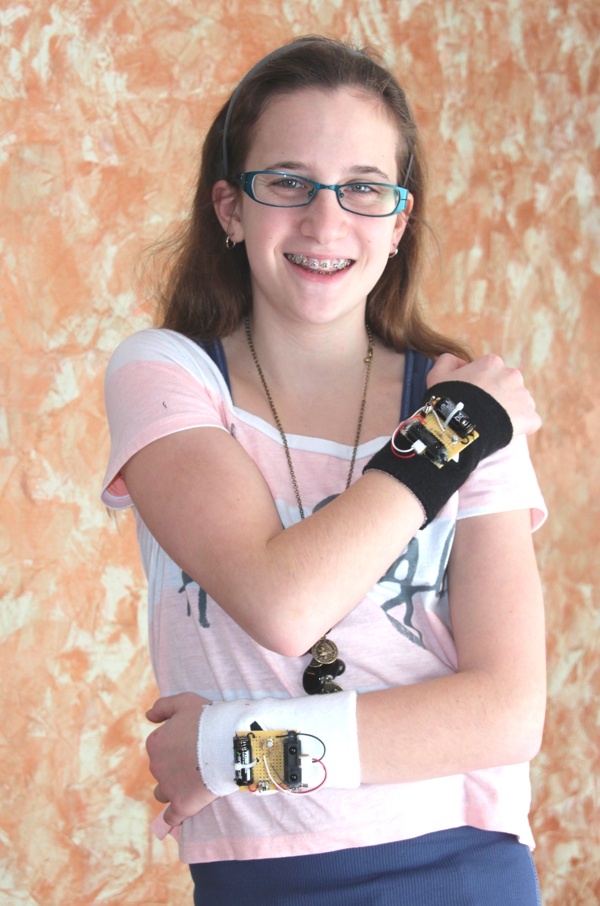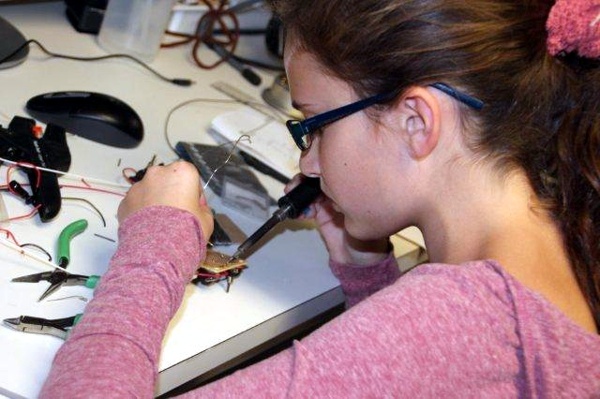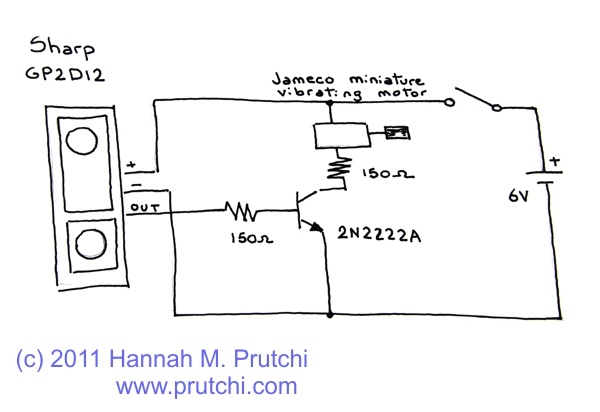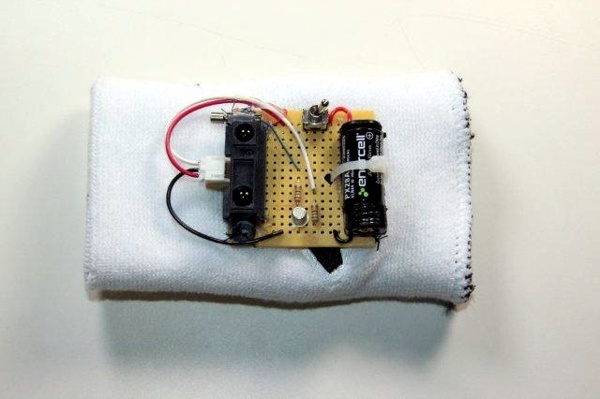 SharkVision – A Sensing Suit for the Blind
SharkVision – A Sensing Suit for the Blind
Hannah Prutchi, 8th Grade, Science, VMS, October 2011
Blind people often use canes to avoid obstacles when walking. But, these are intrusive, can only detect obstacles where they are pointed, and could be dangerous to other people. I devised the “SharkVision Suit” to help blind people move around their environment more easily.
I developed this idea from the concept that sharks find their prey by sensing disturbances in an electrical field they form around their bodies. This suit simulates the shark’s ability to sense objects around its body, giving a blind person a new type of sense.
Technologies that copy biological functions, such as this suit, are called biomimetic. Biomimetics comes from bios, Greek for “life,” and mimetic which means “to imitate.” Although humans don’t have the shark’s sense, scientists have also discovered that our brain quickly adapts to any information to compensate for a loss of function. This is called “neuroplasticity.” The person’s brain will easily get used to the new sense allowing the person to feel objects in his or her environment.

The suit has many distance sensors placed at different positions over the body. Each sensor activates a vibrator whenever an object gets at a certain distance. As a sensor gets closer to an object, the vibration gets stronger. This way, the user can sense near-by objects without touching them.

For my prototype bracelets I built a small circuit that uses a Sharp GP2D12 infrared sensor. The sensor picks up a signal by sending out a stream of infrared light. If the light bounces back, then the sensor knows something is there. The sensor then sends a signal to the transistor. The transistor amplifies the sensor’s signal so that the vibrator can run. The resistors adjust the current from the transistor to vibrate the motor. The vibration becomes stronger as an object approaches the sensor.
It is very easy for me to walk blindfolded around the house without bumping into things by just using my two prototype bracelets. My friends and classmates quickly understood the idea, and were able to walk around with their eyes closed.



Great idea.
>The suit has many distance sensors placed at different positions over the body.
How many are there? And where are they placed?
Hi Brian, Hannah only built two as a proof of concept. I was actually very surprised when I tried it, and just these two were enough for me to walk around blindfolded. She envisioned a suit with many sensors (around 14), but after the great results with just two bracelets, it convinced us that a complete set may not require more than 4 or 5 independent units like the prototypes. Now, Hannah never had a blind person try it, and all the tests were done in a familiar environment, so this is only based on limited data, but nevertheless it surprised us all that such simple design would work so well!
Yes, it is amazing. I love the idea of another “sense”. I’m wondering what it feels like to wear them all day. Does it become familiar input? I’d love to see where this can lead to.
An extension of the idea (not really part of the original idea) would be to move the sensors to an object not on the person, to “extend” their body.
Are there plans of testing this further? I am quite curious as to the results of any tests.
Great Job!! And a positive review from the big boys @ [Hackaday]. Please remember how amazed I am by you’re accomplishment when your army of robots is taking over the world!
Absolutely amazing! keep up the good work!
Impressive work – simple work! Keep it up! The world needs more female engineers!
Going to build one my self but incorporate an audio signal out changing pitch of a tone. 🙂
Sadly, unless you luck into to some old stock, the Sharp GP2D12 is obsolete with no stocked substitute.
Thank you Hank for your comment. We had GP2D12s in our parts box, so we didn’t know that it had been discontinued. An available part that seems to be similar enough for this application is the Sharp GP2Y0A21YK0F Analog Distance Sensor. It has the same distance range as a GP2D12 and very similar analog output properties.
Available at Pololu http://www.pololu.com/catalog/product/136
Yea David! Interesting Pololu has bunches and Mouser and Digikey show zilch…go figure. Here are some other models and don’t forget the matching JST connector and cable. http://www.pololu.com/catalog/category/79